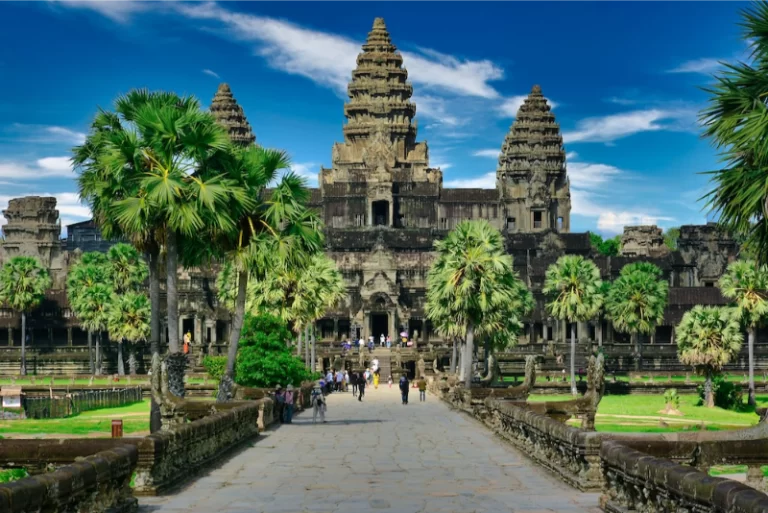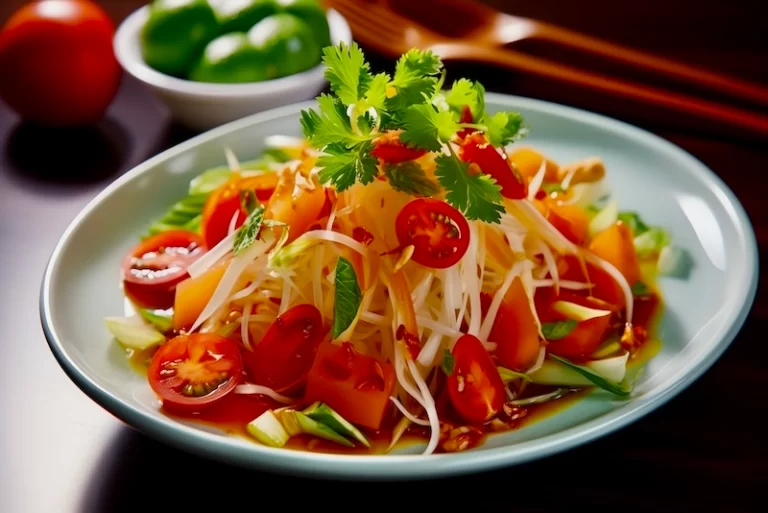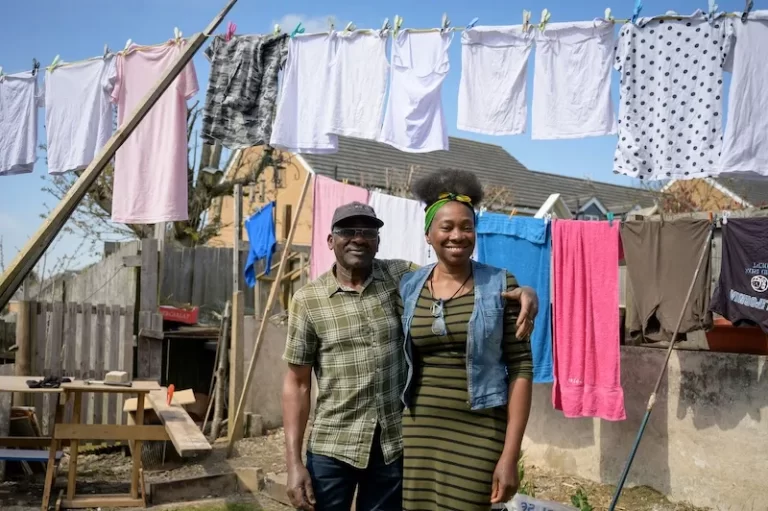The History of Cambodia
A Journey Through Resilience and Beauty
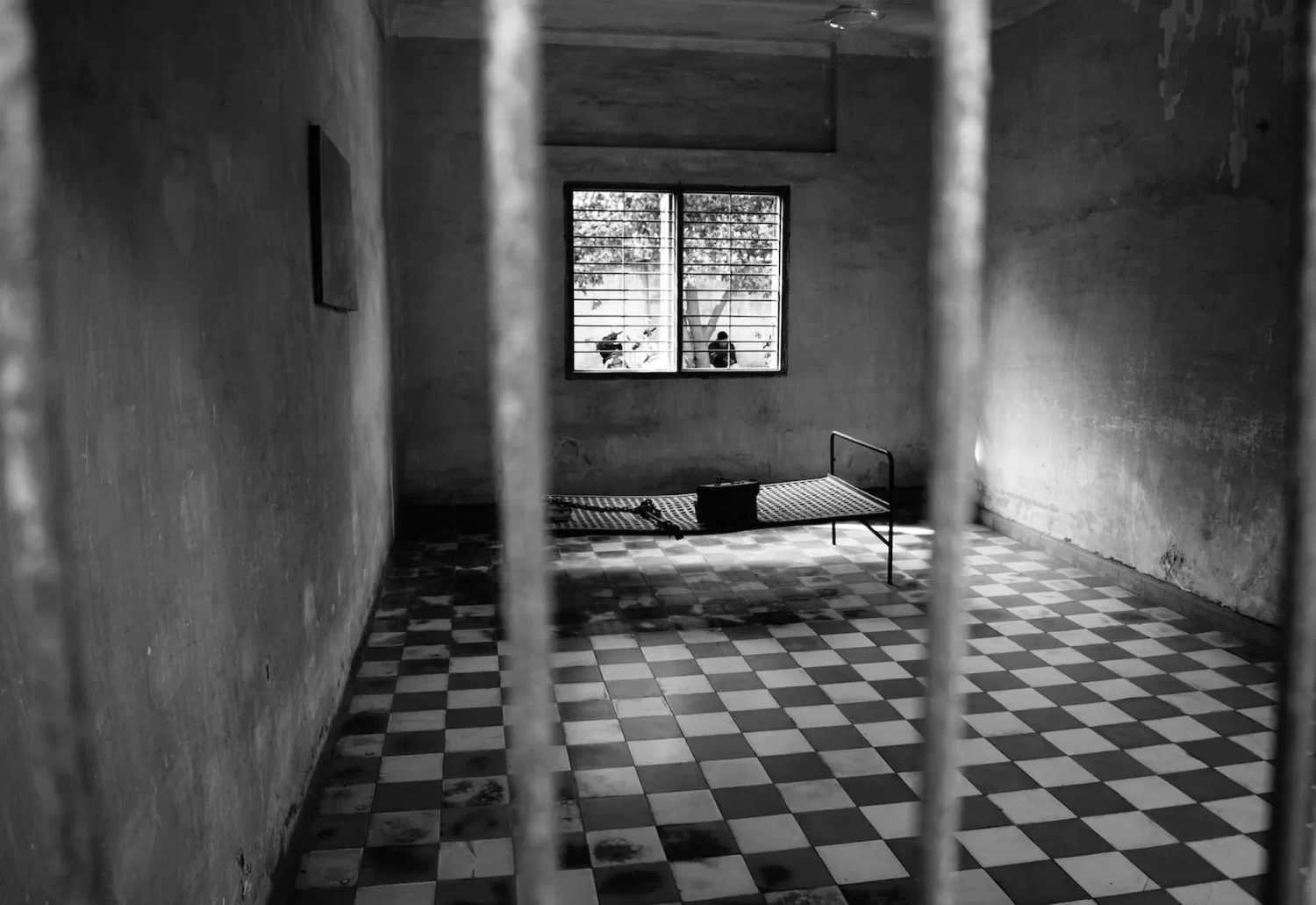
Life in Cambodia revolves around family, religion, food, and kindness. Cambodians are known for their generosity, often sharing meals with strangers passing by. This way of life has remained unchanged for centuries, reflecting a beautiful and thoughtful culture.
Respect for elders is deeply ingrained in Cambodian society. Younger family members listen to and follow the advice of their elders, both at home and in the workplace. Families, including extended members, come together to celebrate both joyous and challenging times. While the country has endured a painful history, Cambodians focus on living in the present.
Celebrations
Khmers love celebrating festivals, weddings, successes, and even mourning together. When a parent passes away, men often shave their heads as a sign of respect. It’s common for multiple generations to live under one roof, sharing everything from food to beliefs and religion.
However, this harmonious way of life was shattered in 1975 during one of the world’s darkest periods: the reign of The Khmer Rouge.
The Khmer Rouge
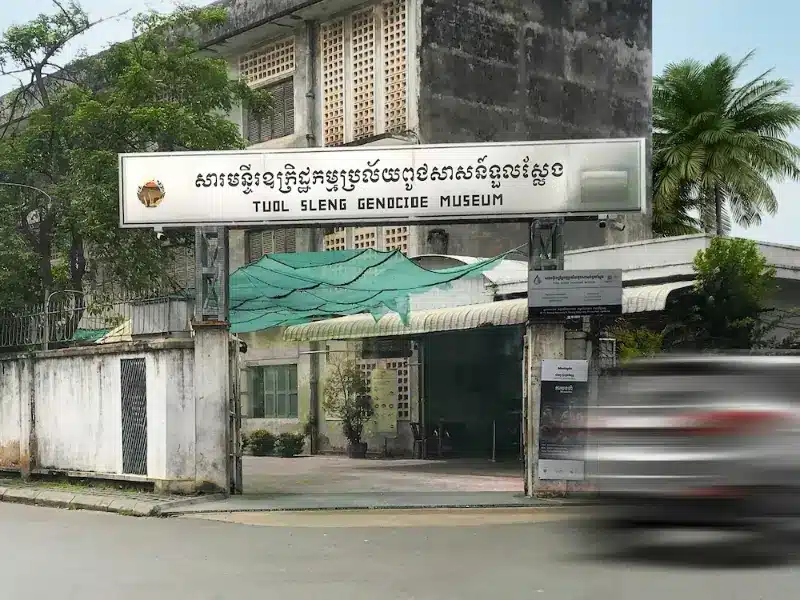
The Khmer Rouge, meaning “Red Cambodians,” ruled Cambodia for four years under the dictatorship of Pol Pot. Pol Pot aimed to create an agrarian utopia, forcing Cambodians to abandon modern life and return to subsistence farming. This brutal regime led to the deaths of over 2.2 million people from starvation, torture, disease, and overwork.
Families were torn apart, and trust was destroyed. Children as young as four were forced to kill their own family members. Even today, the scars of this era remain, with many Cambodians struggling to rebuild trust within their families.
A Film you should watch
To grasp the depth of Cambodia’s history, watch these heart-breaking films:
- First They Killed My Father (directed by Angelina Jolie)
- The Killing Fields (directed by Roland Joffé)
- City of Ghosts (directed by Matt Dillon)
These films offer a poignant look into Cambodia’s past, so keep tissues handy.
Pol Pot and the Rise of the Khmer Rouge
In the 1960s, the Khmer Rouge operated as the armed wing of the Communist Party of Kampuchea. After King Norodom Sihanouk was overthrown in 1970, the Khmer Rouge gained support and eventually seized Phnom Penh in 1975. They renamed the country Kampuchea and declared it “Year Zero,” isolating it from the world and abolishing currency.
The Genocide
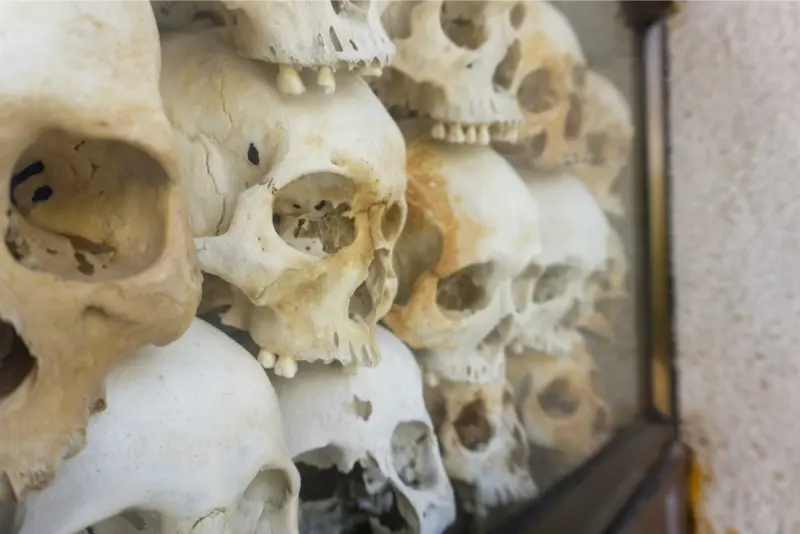
The Khmer Rouge’s policies led to widespread suffering. Intellectuals, professionals, and even those who wore glasses or spoke foreign languages were executed. Survivors like Chum Mey and Vann Nath have shared their harrowing stories of imprisonment and survival at Tuol Sleng Prison (S-21), now a genocide museum.
Mr Lim’s Story
Surviving the Khmer Rouge
One of the most heart-breaking stories of survival is that of Mr Lim, a friend who endured the horrors of the Khmer Rouge. He survived by never revealing that he could speak another language, as trust had been completely eradicated. His story is a testament to the resilience of the human spirit.
Watch Mr Lim’s Story: https://youtu.be/CFIIBMVOFyo
This video offers a poignant glimpse into the life of a survivor during the Khmer Rouge era.
S-21 is the old school
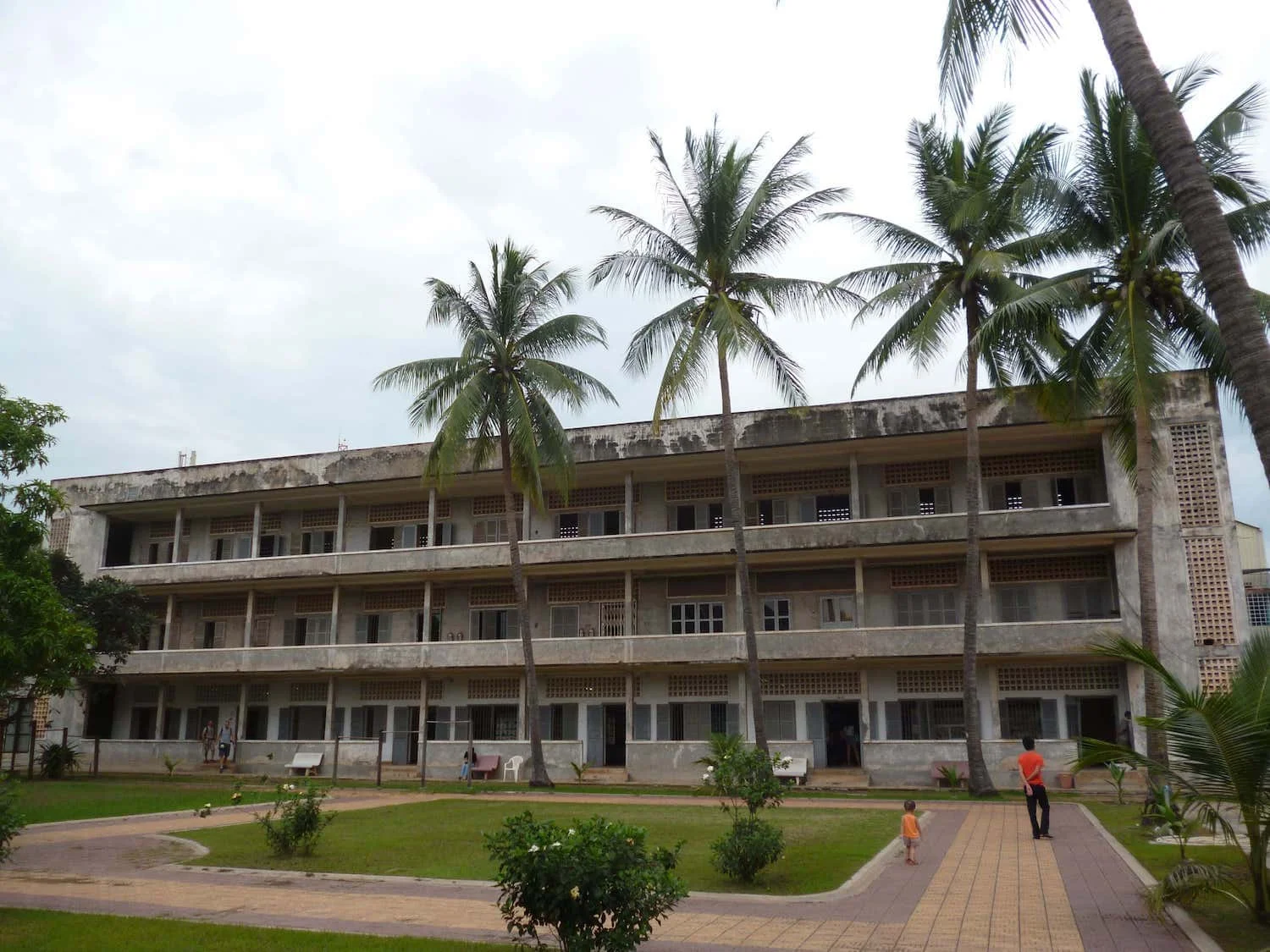
Nearly 17,000 men, women, and children were imprisoned in Security Prison 21 (S-21) also known as Tuol Sleng. Prisoners were shackled and forced to sleep in overcrowded rooms, often with 20 people sharing a small space. Nearly all inmates were executed, with only seven survivors remaining today.
One survivor, Chum Mey, was a mechanic before being imprisoned. He survived by repairing typewriters for the Khmer Rouge, deliberately working slowly to prolong his life. Another survivor, Vann Nath, used his artistic skills to paint portraits of Pol Pot and high-ranking officers, which saved his life.
Both men now share their stories with visitors at the Tuol Sleng Genocide Museum, a haunting reminder of Cambodia’s tragic past. If you visit, be sure to bring tissues—it’s an emotional experience.
The End of the Khmer Rouge
In 1979, the Vietnamese Army invaded Cambodia, removing Pol Pot from power. Despite this, the Khmer Rouge remained active in the jungles for years. Cambodia has since rebuilt ties with the world, but challenges like poverty and illiteracy persist.
Modern Cambodia
A Country of Resilience
Today, Cambodia is a peaceful nation with a growing tourism industry, thanks to attractions like Angkor Wat. However, corruption and the legacy of landmines from the Vietnam War continue to affect the country. Organisations like the Cambodian Mine Action Centre (CMAC) and individuals like Angelina Jolie and Princess Diana have worked tirelessly to clear landmines.
Personal Reflections
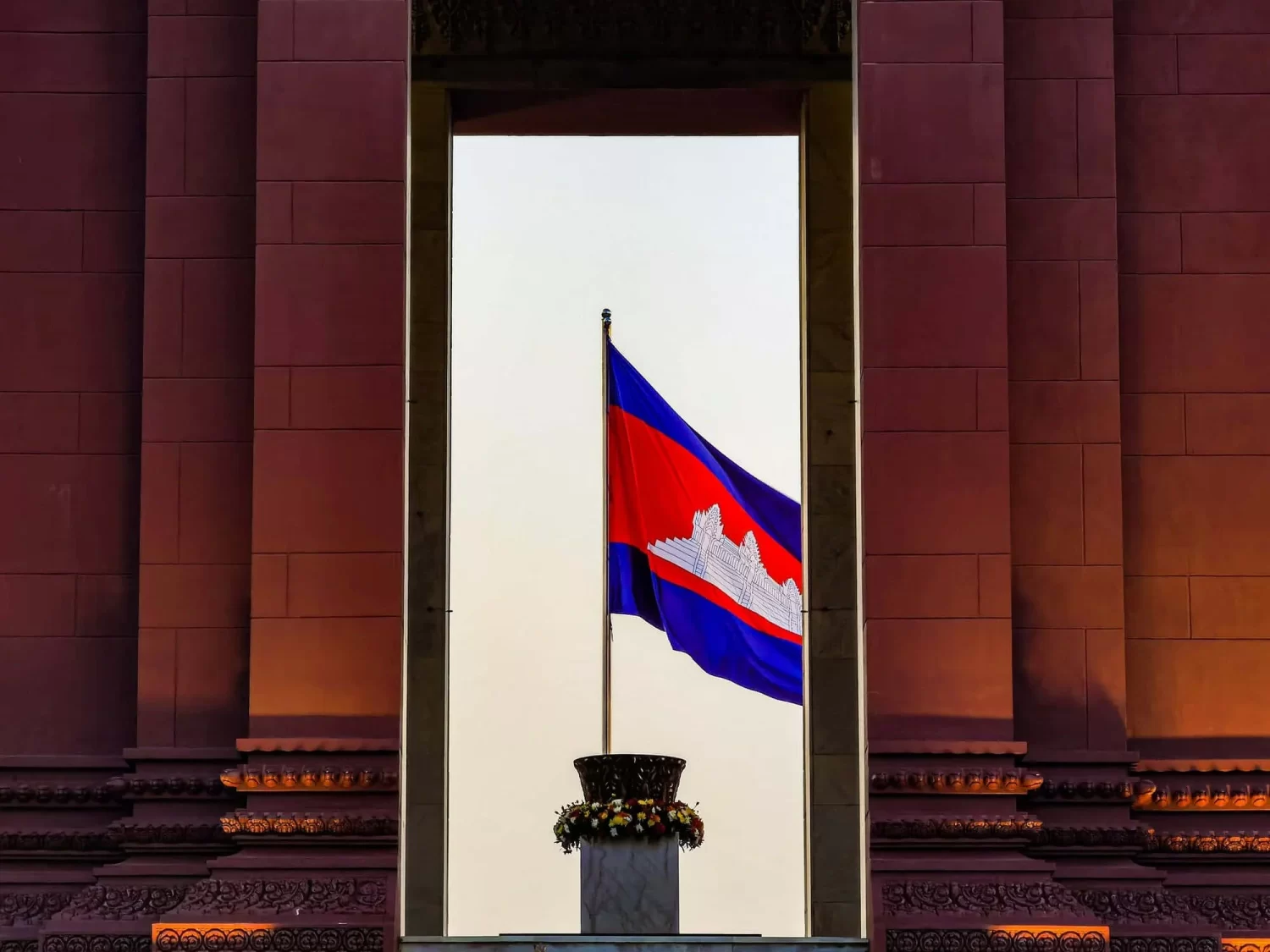
I have lived in Cambodia for nearly 17 years, having first arrived in 1997. The changes I’ve witnessed have been slow but meaningful. I love this country—its people, nature, and animals. It breaks my heart to see the struggles some face, which is why I try to help wherever I can. Cambodia has taught me the importance of paying it forward.
The flag of Cambodia symbolises a nation rich in history, culture, and resilience. While the pace of change is slow, it mirrors the gentle rhythm of life in this beautiful country. Don’t forget to explore the stunning islands of Cambodia, such as Koh Rong and Koh Rong Samloem, which offer a glimpse into the country’s natural beauty.
The Legacy of Landmines
Sadly we are still left with many mines
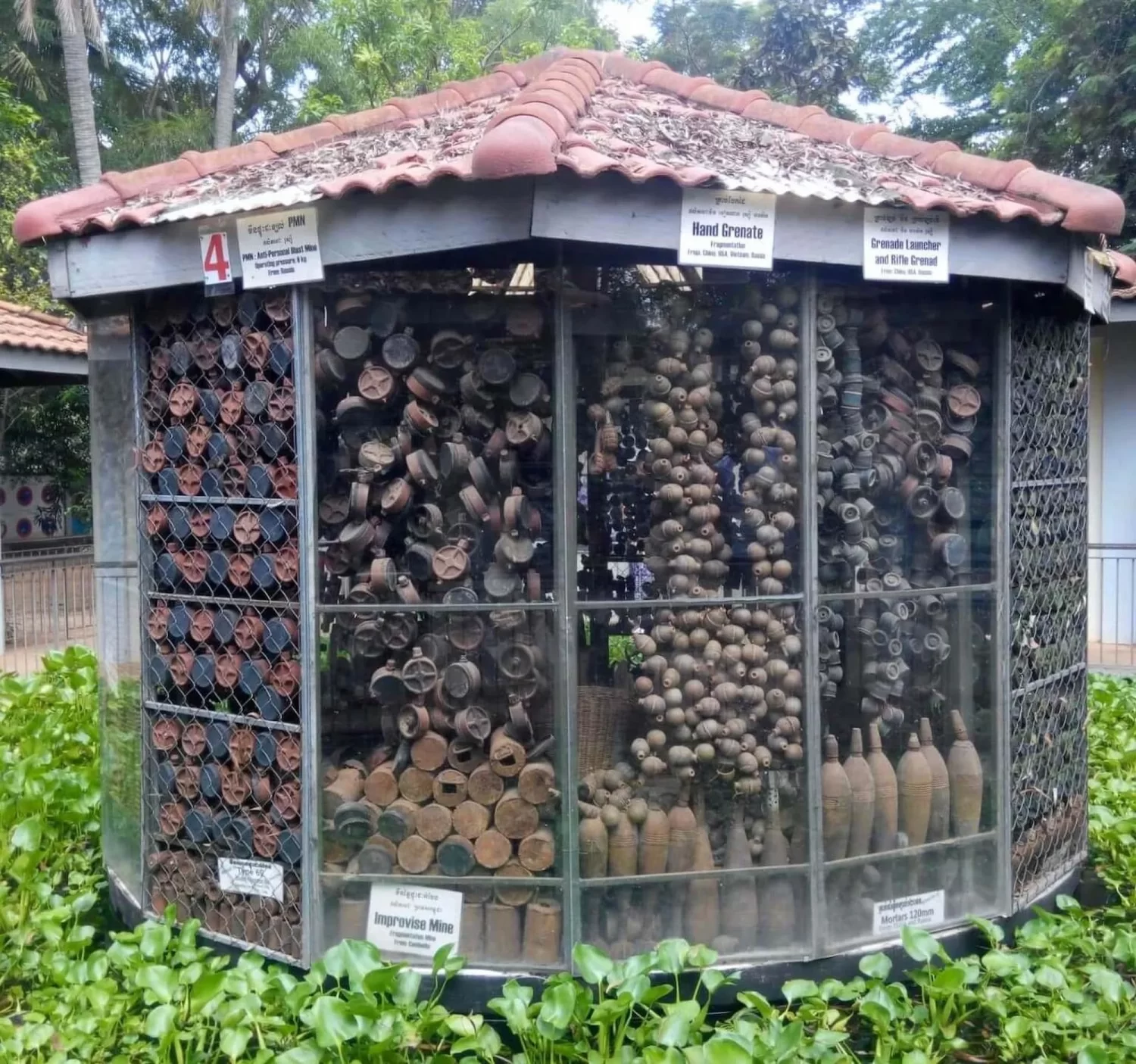
Historical Context
The Vietnam War did not only impact Vietnam but also Cambodia, where over 110,000 tons of bombs were dropped during a 14-month period through April 1970. A total of 3,630 flights over Cambodia unleashed this devastation, marking one of the darkest chapters in the country’s history. Sadly, this is a fact that not many people are aware of.
Current Impact and Efforts
Today, Cambodia remains one of the most heavily mined countries in the world. Landmines and unexploded bombs can still be found in backyards, rice fields where people work, and on the roads where children walk to school. This ongoing threat means that thousands of people are maimed or killed every year.
If you ever visit Cambodia, make sure to visit the land mine museum in Siem Reap. This museum sheds light on the devastating impact of landmines and the efforts being made to clear them. It’s a sobering but important experience that highlights the resilience of the Cambodian people.
Watch the Landmine Story: https://youtu.be/HJX_hMtEh4g
Efforts to clear landmines are ongoing, but it will take decades to make Cambodia entirely safe. Organisations like the Cambodian Mine Action Centre (CMAC), along with individuals such as Angelina Jolie and the late Princess Diana, have worked tirelessly to address this issue. Even today, incredible efforts continue, including the use of specially trained rats to detect landmines.
Takeaway
Visiting Cambodia

Cambodia’s people, culture, and landscapes are truly inspiring. Despite its painful history, the country radiates resilience and hope.
If you’re inspired by Cambodia’s resilience and beauty, consider visiting this incredible country or supporting organisations that work to clear landmines and improve the lives of its people. Your visit or contribution can make a real difference.”
Recommended Books About Cambodia
For those interested in learning more, here are some excellent books:
- Human Trafficking in Cambodia by Chenda Keo – A Cambodian author’s exploration of human trafficking.
- Culture Smart!: The Essential Guide to Customs & Culture – A guide to understanding Cambodian culture.
- A History of Cambodia by David Chandler – A comprehensive look at Cambodia’s history.
- Cambodia’s Curse: The Modern History of a Troubled Land by Joel Brinkley – A Pulitzer Prize-winning journalist’s take on modern Cambodia.
- First They Killed My Father by Loung Ung – A memoir of survival under the Khmer Rouge.
- A Cambodian Prison Portrait by Vann Nath – A survivor’s account of life in S-21.
- Pol Pot: Anatomy of a Nightmare by Philip Short – A detailed biography of the Khmer Rouge leader.
- Survival in the Killing Fields by Haing Ngor – A survivor’s account of the Cambodian holocaust.
- Lucky Child by Loung Ung – The story of two sisters reuniting after the Khmer Rouge.
- When Broken Glass Floats by Chanrithy Him – A story of survival under the Khmer Rouge.

